Appearing in our July/August 2023 print issue before the Maui wildfires, this article illustrates the importance of listening to Native Hawaiians and residents about how best to respect their sacred home. When you consider traveling to Maui or other Hawaiian Islands in the aftermath of the wildfire disaster, please consider first asking how you can help. –Jill K. Robinson
Pink edges of dawn fade into the powdery blue of morning at Maui’s Honokahua Bay, with distant spouts of humpback whales hanging in the air above the ocean’s surface like a whisper. On a grassy bluff near the Ritz-Carlton Maui, Kapalua, guests out for an early-morning walk follow the orderly line of a hau (sea hibiscus) hedge that runs between the neatly clipped lawn of the resort grounds and the cliff’s edge.
Upon first glance, the dense hedge might seem to be merely landscaping, but a nearby plaque says otherwise. The boundary marks the Honokahua Preservation Site, where remains of more than 2,000 Hawaiian kūpuna (ancestors) date from between 850 and the early 1800s. Registered as a State Historic Place, the site is reserved exclusively for native Hawaiian ceremonial and religious practices.
“Every once in a while, someone decides to take a shortcut through the site without realizing that they’re walking on the ancestors,” says San Michel. Known as Aunty San, she’s an Ambassador of Aloha at the resort. “When I call them over to ask them to change their path, they’re always very understanding.”
While tourism as an industry is about a century old in Hawai‘i, the Hawaiian cultural practice of hospitality has been part of daily life for many centuries. The eventual growth in scale and scope of Hawai‘i tourism overtook the capacity of residents to practice that hospitality, with offshore interests taking larger shares of ownership and management, and tourism spilling over from resort areas into local communities with short-term rentals.
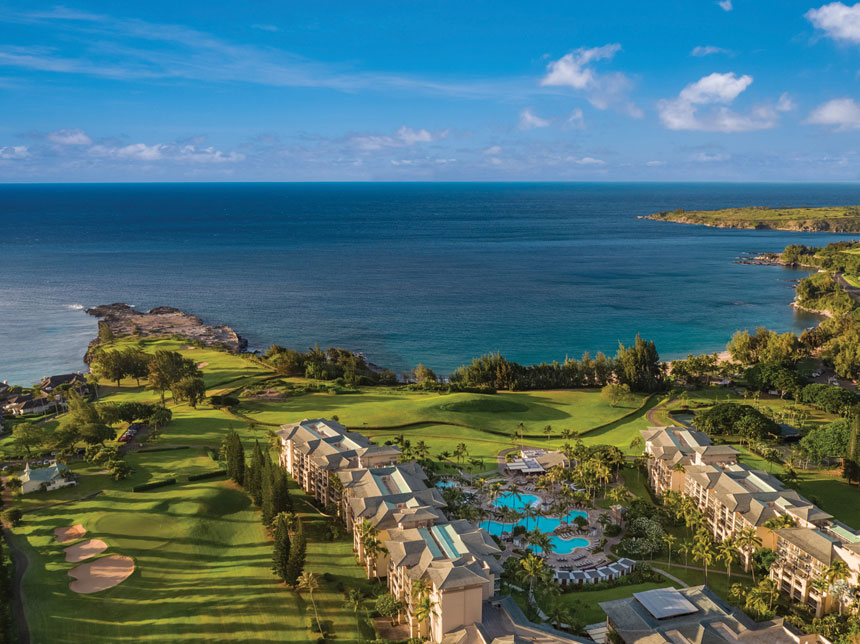
The COVID-19 pandemic provided an extreme contrast between the Hawaiian Islands’ record-breaking 10.4 million visitors in 2019 and nearly zero visitors in the spring of 2020. Hawaiians had the opportunity to rethink what healthy tourism looked like, honoring the needs of the place and people while offering the hospitality that has made the islands a dream destination for generations of travelers.
“The visitor industry is a part of the fabric of Hawai‘i society, amplifying our potential to help heal the world with the values that have guided us for generations,” says T. Ilihia Gionson, Public Affairs Officer for the Hawai‘i Tourism Authority. “Doing right by Hawai‘i isn’t simply altruistic — it results in a better experience for the visitor.”
Just before the pandemic in January 2020, the Hawai‘i Tourism Authority adopted a strategic plan that set the stage for the change to come. The plan places an emphasis on destination management, aligns key performance indicators with community priorities, and elevates community goals of natural resources and Hawaiian culture to equal footing with brand management.
But even before that, organizations and individuals have acknowledged the importance of Hawaiian culture in the tourist industry. The hau hedge that borders the Honokahua Preservation Site is one example. In 1987, when developers started excavating the burial land in the sand dunes at Honokahua Bay to build the Ritz-Carlton resort, native Hawaiians rallied to stop the digging.
The conflict paved the way for a change in the state’s historic preservation law in 1990, giving unmarked burials the same protection as modern cemeteries. After learning of the significance of the discovery and the importance of leaving the wahi pana (sacred site) undisturbed, the entire hotel was redesigned and moved inland. The resort now helps maintain the site.
“I can remember exactly what I was thinking as I drove my car to apply for a job,” says Clifford Nae‘ole, the hotel’s Hawaiian Cultural Advisor. “Seeing the cultural clashes brought this to my mind: ‘Am I sleeping with the enemy?’ Now, 30-plus years later, I have come to the realization that the responsibility had selected me. Even today, I continue to care for, preserve, protect, and defend the sanctity and dignity that the sacred site at the boundaries of our hotel is deserving of.”
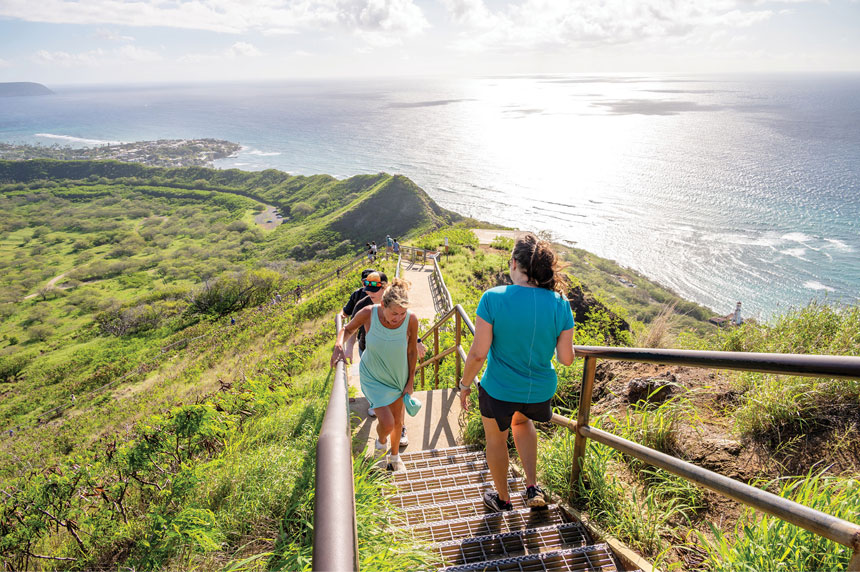
In many cases, hotel and resort management in Hawai‘i has grown to understand that having a cultural specialist on staff is essential — providing feedback from hotel architecture to how guests can get a true immersion into Hawaiian culture. “These cultural advisors have executive powers and are able to design and implement important programs, and even delete programs that are either exploitative or condescending to the culture,” says Nae‘ole. “The thought process now is that the culture will watch the visitor to ensure softer footprints, legacy programs, educational experiences, and spiritual and traditional protocol.”
“I think the biggest challenge that remains is that those cultural programs thrive when management understands their importance as well as culture’s core role in the destination’s attractiveness, instead of sticking the cultural stuff only with activities,” says Gionson. “There are cultural implications to culinary programs, landscaping, language, all of it. Because national and international brands often move their management around, there’s a constant need for re-education.”
The impact goes far beyond hotels and resorts. Collaborative, community-based management plans to reset the direction of tourism in the Hawaiian Islands have included the implementation of reservation systems at heavily visited state and city parks: Lē‘ahi–Diamond Head State Monument (O‘ahu), Hanauma Bay Nature Reserve (O‘ahu), Hā‘ena State Park (Kaua‘i), ‘Īao Valley State Monument (Maui), and Wai‘ānapanapa State Park (Maui). Prior to the pandemic, Haleakalā National Park instituted a reservation system in 2017 for those visiting the summit during sunrise hours.
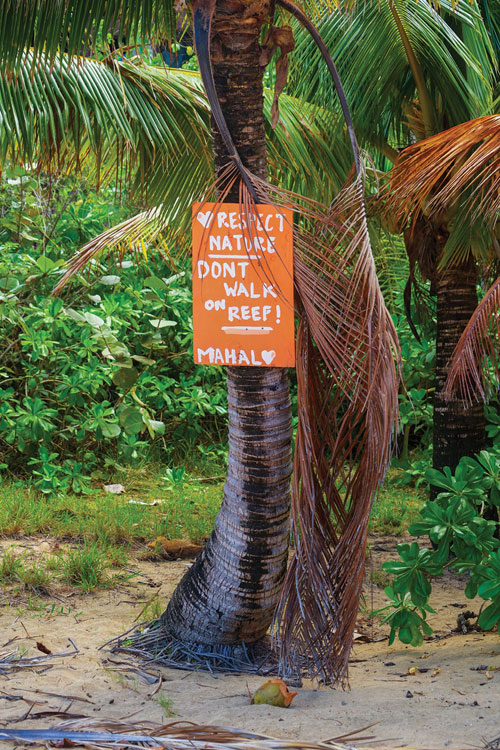
for respecting the land and nature. (Shutterstock)
The challenge with crowding at beloved attractions is less about the big number and more about the specific number at a specific place at a specific time. With the bulk of Lē‘ahi’s more than 3,000 daily visitors arriving at sunrise, parking was difficult, and the narrow trail couldn’t support everyone at once. Reservations that allocate a number of visitors throughout the day help mitigate environmental impacts sustained by foot traffic, reduce vehicle congestion in the parks and surrounding neighborhoods, and help preserve these landmarks for future generations.
“If you have one kitchen in your house, you can’t expect that everyone in your family and the people who you’re hosting can make a meal at the exact same time,” says Mālia Sanders, executive director of the Native Hawaiian Hospitality Association (NaHHA). “We want to make sure there are responsible resources where visitors can get information in advance about what’s available, so that when they arrive, they know what they can do, what they’re supposed to do, and what we want them to do.”
While a role of the Hawai‘i Tourism Authority is to manage the marketing and messaging about Hawai‘i, the NaHHA acts to lay foundational experiences so that messaging can be delivered properly. In partnership with travel2change, NaHHA’s Kaiāulu Ho‘okipa program helps Hawai‘i nonprofit organizations and community groups host experiences for both residents and visitors and forge mutually beneficial, reciprocal relationships — creating genuine connection to people and place.
“The aloha spirit isn’t magic,” says Sanders. “We live it every single day. Hawaiians are connected to the land, and the land is part of the relationship we have with ourselves. We have a genealogy to the land in our creation story, and there’s a reciprocal relationship of taking care of the land and taking care of each other. Yes, come and visit Hawai‘i, change the way you think, change the actions that are important to you by being with us and doing the things that are important to us, with us. In doing so, you’ll get back home and realize how you can incorporate in small ways the things that you’ve learned here, and share that with other people. That’s really what aloha is.”
Throughout the timeline between the Kumulipo chant that records the Hawaiian creation story to today, there are periods of Hawai‘i’s history that have been glossed over when telling the story of the destination. In many places, the truth behind the overthrow of the Hawaiian Kingdom by 13 white businessmen and lawyers who staged a coup against Queen Lili‘uokalani has been mentioned only briefly, with the resolution of Hawai‘i’s statehood expressed solely as a positive conclusion.
The details of that story are showing up in more places now. At the Polynesian Cultural Center on O‘ahu, the Ali‘i Lū‘au show is a tribute to Queen Lili‘uokalani, Hawai‘i’s last ruling monarch and only sovereign queen. Begun in September 2022, ‘Onipa‘a (meaning “steadfast,” the Queen’s motto) shares the stories of her life, told through her own words, songs, and original compositions.
At the Ritz-Carlton Maui, Kapalua, a weekly Sense of Place program begins with a presentation of Elizabeth Kapu‘uwailani Lindsey’s award-winning documentary film, Then There Were None. The documentary traces the honest history of the Hawaiian culture. “Many people have cried,” says Michel. “Most people are very receptive. A lot are surprised to learn things they never knew.” After a brief discussion following the documentary, Nae‘ole or Michel lead guests on a walking tour to the border of the Honokahua Preservation Site to explain its significance to Hawaiians.
In tourism, balance and responsibility are urgent considerations. When traveling, we can often forget that just because our money purchased tickets to a place doesn’t mean we can skip asking permission while we’re a visitor. “We all have a role,” says Gionson. “Residents of the destination have a role to set expectations around appropriate behavior, and where you can and cannot go. If we can find a way that a kama‘āina (Hawai‘i resident) of that place can be part of proactive stewardship and they can support their families doing that, then I think we’ve sort of reached the promise of a positive balance in tourism.”
Later in the day, while standing near the hau hedge to spy whales in Honokahua Bay, I see someone cutting across the burial grounds. Phone in hand, the woman looks like she’s scouting a good place for a photo, and not intentionally violating a sacred space. After my immersion in the history of the site, I feel a responsibility to tell her. But I’m not kama‘āina. Am I overstepping?
Nae‘ole’s words ring in my ears: “You as the individual should consider yourself as the first blossom of a daily lei. Each person that we can speak with and share something worthwhile about these islands will become a lei that you can form each day. One of our goals is to have our visitors arrive as guests, but leave as family.”
Even though I’m not Hawaiian, I feel like family. I decide to tell the trespasser. “I’m so, so sorry,” she gasps, squeezing through a break in the hedge only moments afterward. “Thank you for letting me know.” It may seem like the simplest thing to do, but in this moment, my daily lei has grown.
Jill K. Robinson writes about travel and adventure for Condé Nast Traveler, National Geographic, AFAR, Travel + Leisure, Hemispheres, and more. Her book collaboration with Gordon Ramsay and National Geographic, Gordon Ramsay’s Uncharted: A Culinary Adventure with 60 Recipes from Around the Globe, was released this year.
This article is featured in the July/August 2023 issue of The Saturday Evening Post. Subscribe to the magazine for more art, inspiring stories, fiction, humor, and features from our archives.
Become a Saturday Evening Post member and enjoy unlimited access. Subscribe now
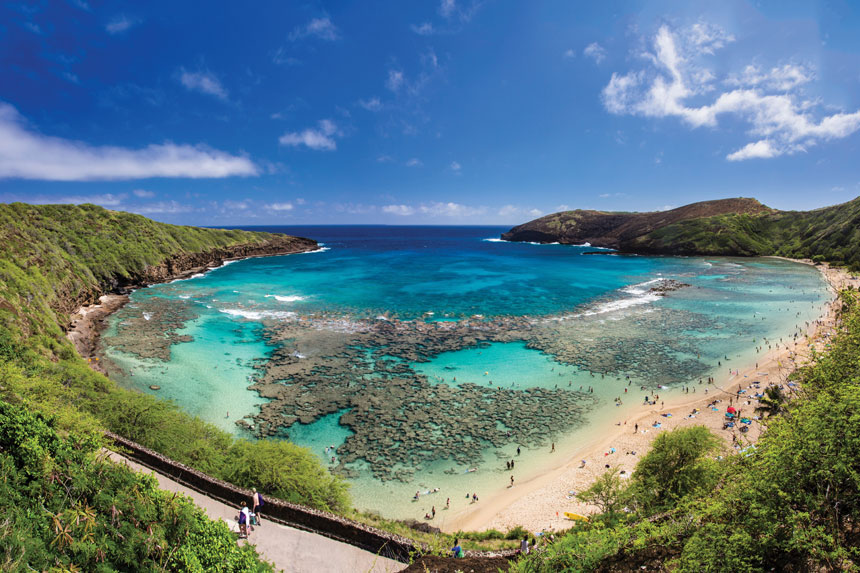
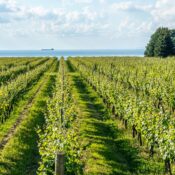

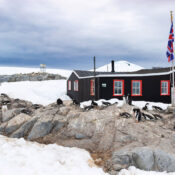
Comments
Hawaii: develop only in dense urban areas which will require highrises, make them well designed. The rest of the state parks , farm areas , historical settlements . Have hood transit)buses,boats to the places of wonder.. that’s about it .. you can no longer survive with the “status quo mentality of “ don’t tell me what to do”